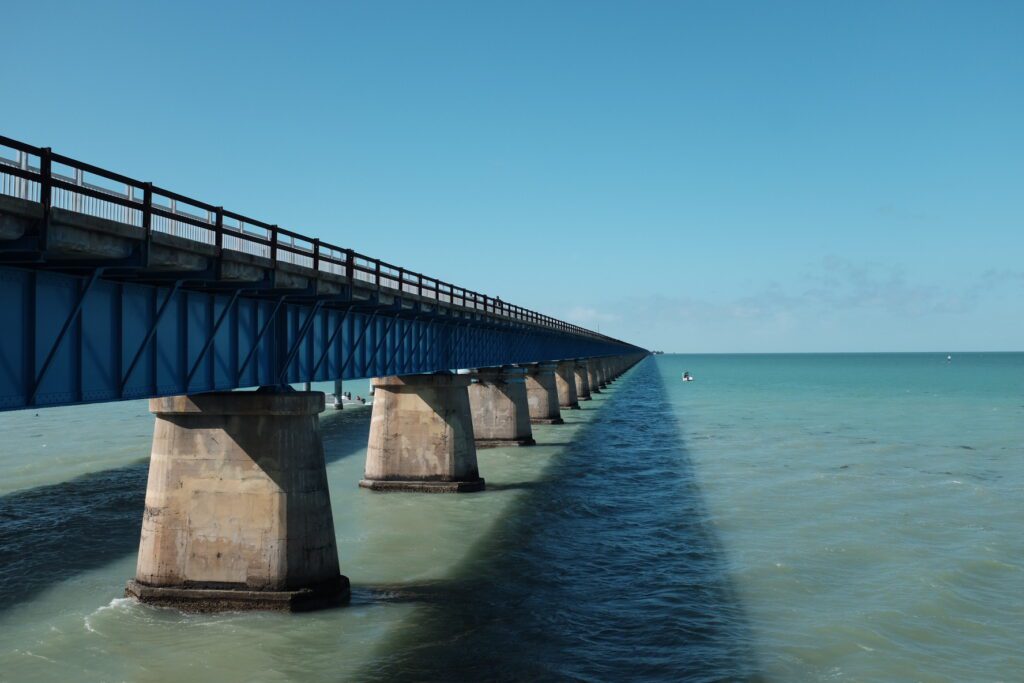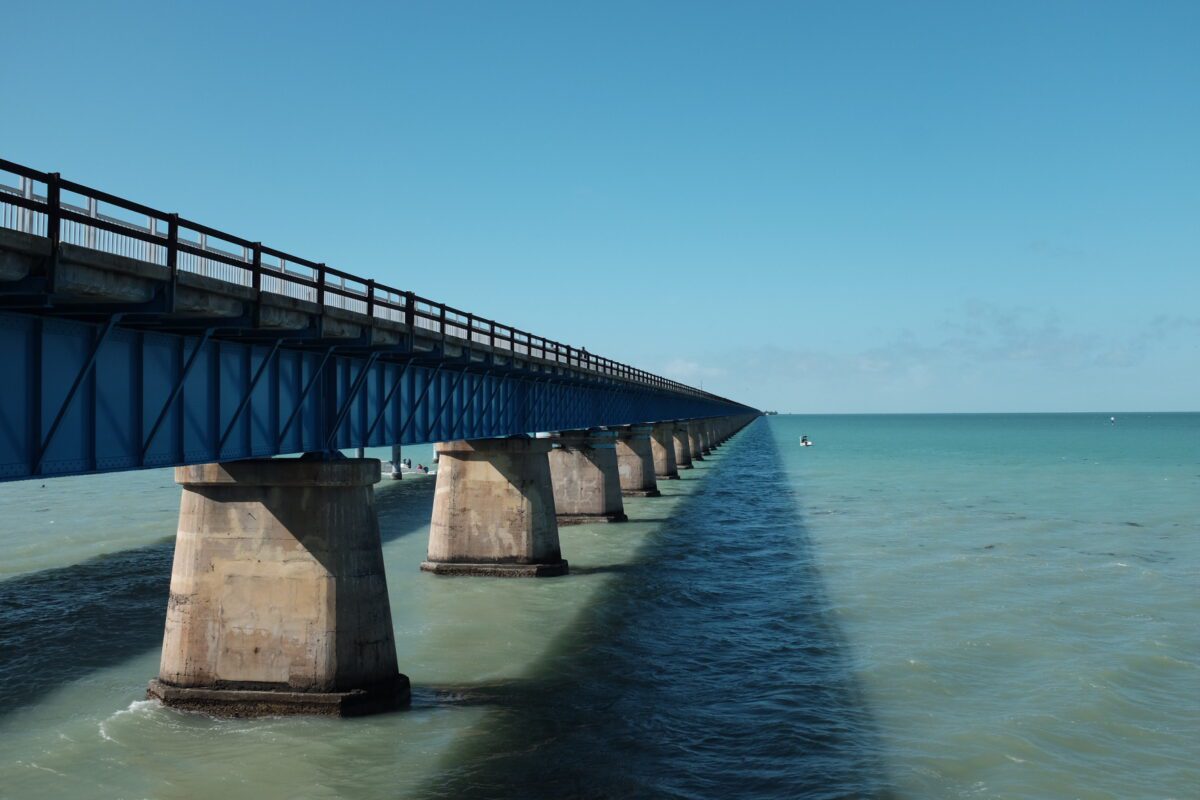Recently I visited Florida with my wife where we embarked on a strange and wonderful journey to perhaps the most scenic stroad of all: US Highway 1 in the Florida Keys. We drove, we walked, we ran across the highway, and because it was so cold while we were there, we saw numerous iguanas falling from trees to get warm on the pavement.
The Florida Keys were originally connected by the Florida Keys Overseas Railroad in 1912 by Henry Flager. (Yes, that Flager, the one whose name is on the business school.) With the completion of the Panama Canal, Flager thought that having a railroad terminus out in the middle of a shipping channel would be a big win. The railroad bridges required to connect the keys employed a number of new engineering techniques and the route was coined the “Eighth Wonder of the World” when it was completed.
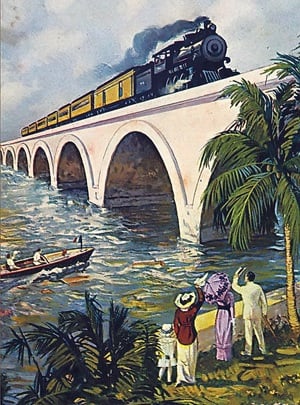
Turns out that the business idea wasn’t as solid as Flager imagined, and when a hurricane severely damaged the tracks in 1935, the railroad line was abandoned in place. In 1936 the State of Florida stepped in and purchased what remained of the tracks and right-of-way for a cool $640k and began a “rails to road” conversion that produced the southernmost end of US Hwy 1, the Overseas Highway. Today you can rent a convertible Ford Mustang at the Miami airport and drive the 113 miles between Key Largo and Key West, stopping along the way for conch chowder in a restaurant that has definitely got Guy Fieri’s picture on the menu with the owner.
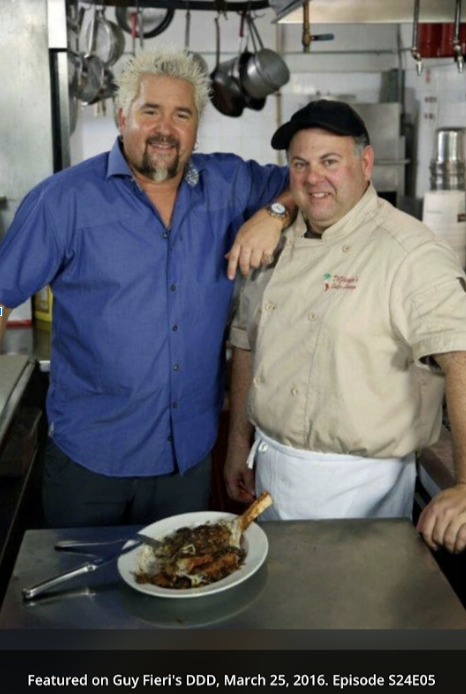
The Florida Keys is also home to one of the nation’s longest greenways, the Florida Keys Overland Heritage Trail (FKOHT). The FKOHT is currently about 90 linear miles of separated, paved trail that runs alongside the highway. Several of the crossings make use of the original decommissioned railroad bridges, the longest of which is the original 7 Mile Bridge.
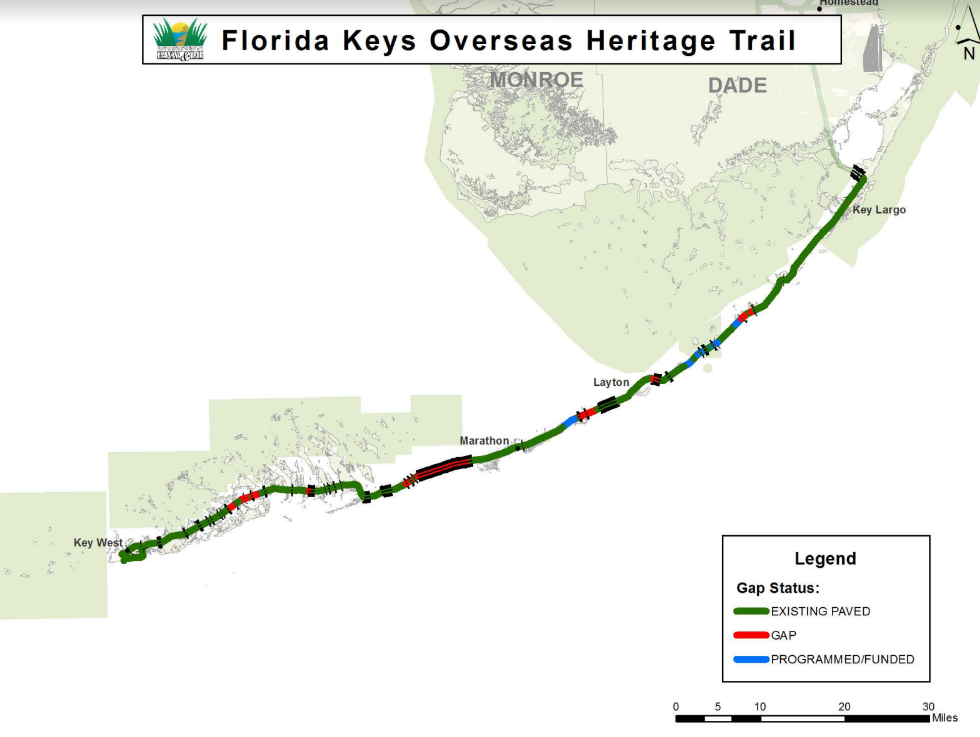
It is a unique experience to walk or ride a bike on a very long bridge out in the middle of the ocean!
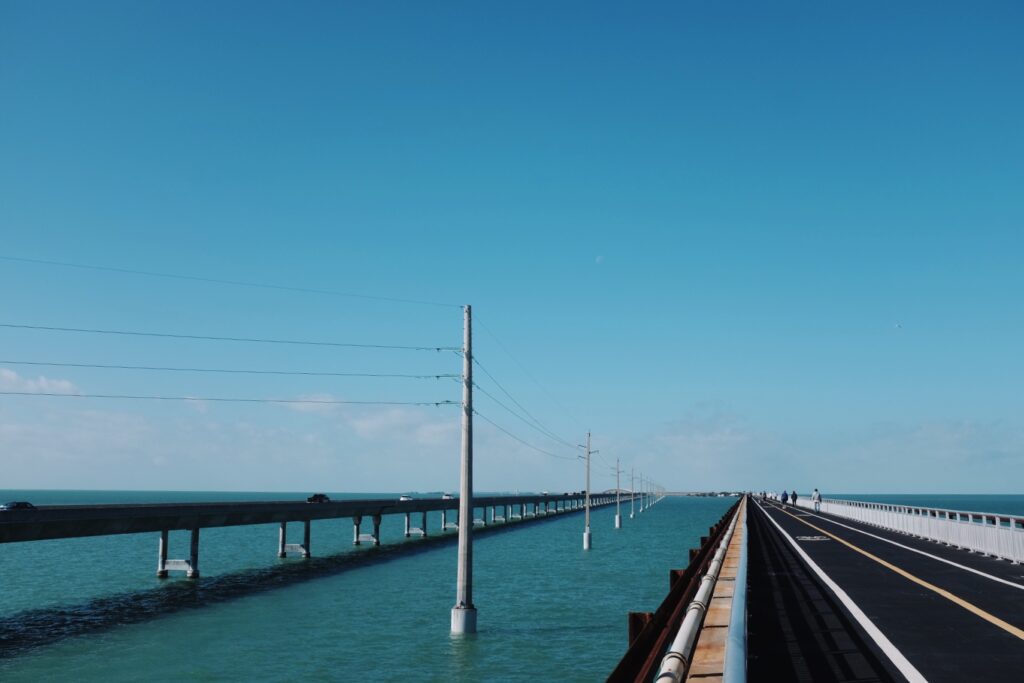
Our experience with using the FKOHT to get around was mixed. We did use it to walk to nearby restaurants and a state park, but because everything in the Keys is divided by a four-lane highway, we ended up scurrying across the road a lot – not something I would recommend doing with your children (our kids were not with us…? grandparents ? ). Hwy 1 has a few High-Intensity Activated Crosswalk Signals (HAWKs) which suggest to drivers that they should stop for you in the crosswalk , but unfortunately you are mostly on your own if you need to get across the highway and this severely limits who can get around the Florida Keys without a personal automobile.
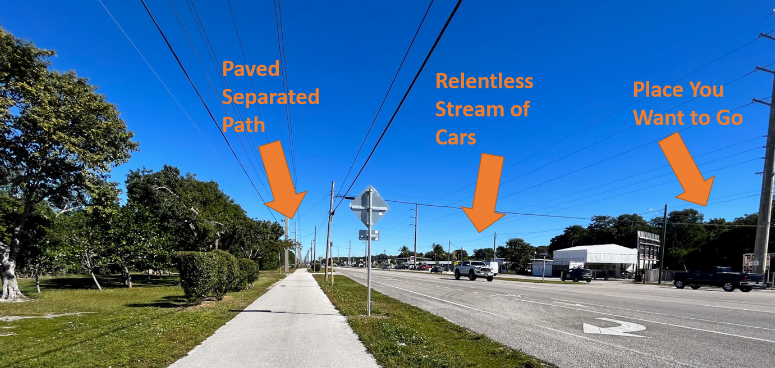
Who uses the FKOHT? From my brief field survey I saw a lot of people using it for both exercise and to travel somewhere. The Keys are inundated with electrified bikes and scooters, so these are very common sightings on the FKOHT. As the trail winds its way into Key West, the bike and scooter traffic explodes. There were a lot of bronzed retirees cruising up and down the FKOHT swaying to the sounds of Jimmy Buffett emanating from the native trees.
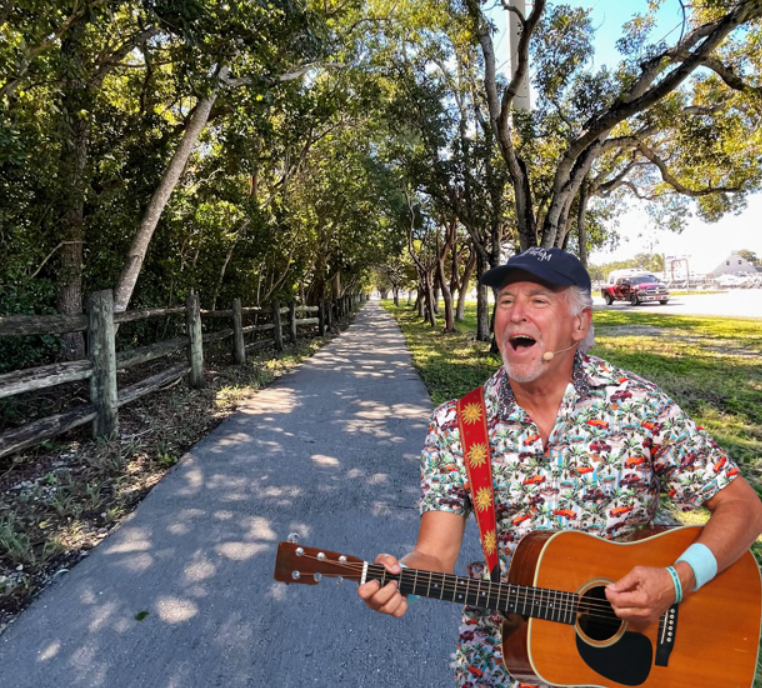
Something that I didn’t know before our trip is that the State of Florida has a relatively progressive stance on greenway development. In fact, way back in 1995 the Florida state legislature passed the Florida Greenways and Trails Act, which among other things establishes an office for greenway development to coordinate a statewide greenway network. FLORIDA SAY WHAT!? Check out the greenway network map for the state:
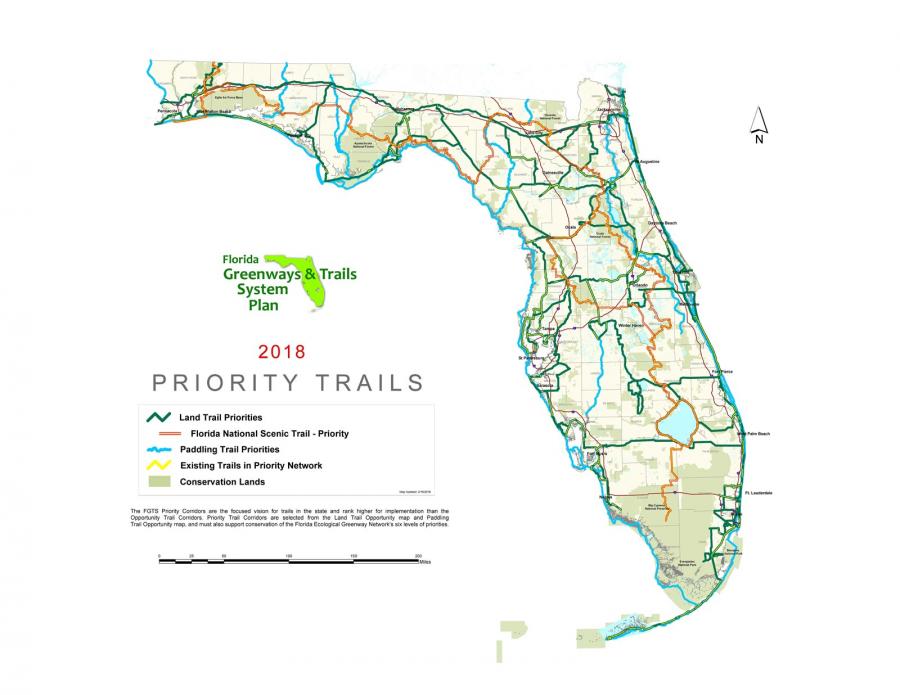
Now, contrast that with North Carolina. In North Carolina we do not have a statewide office to coordinate planning and funding for greenways and trail systems. In fact, the North Carolina state legislature passed the Strategic Transportation Investment Act in 2013 which prohibits investments in standalone bike or pedestrian projects like greenways and trails. Most of our state transportation resources get poured into highway expansion. Greenways in North Carolina get built with federal funds that come to us through the state, or when local communities pass bond referendums like the one the Town of Carrboro passed back in 2003. Wouldn’t it be great if North Carolina had a state office of greenways for coordinating and funding greenway development?
The Florida Keys Overland Heritage Trail was really very interesting to experience and use. I wish it was safer for transportation and running errands, but considering that it is part of a statewide effort to make greenways viable, there is a good chance that it will be better connected in the future.
